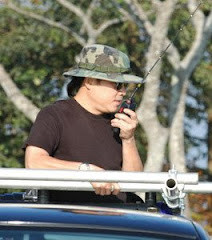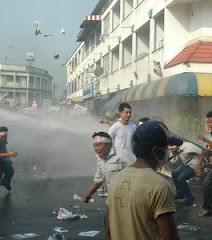
Ringing in a New Look: Curtis Clark Shoots LG Cell Campaign with ARRIFLEX D-20
When director of photography Curtis Clark, ASC wanted to create striking visuals for an LG Electronics cell phone campaign, he chose the new ARRIFLEX D-20 digital camera for image capture. Produced by Trio films, the commercial titled “Sing It” was directed by Eric Steinman. The spot follows three characters on LG cell phones as they sing their responses to people on the other end. Production took place over one day and shot in three Los Angeles locations: a nail salon, a bus and a busy street.
This was not the first time Clark had shot with the ARRIFLEX D-20, a high-end digital camera known for giving “filmic” images. The D-20 uses a CMOS sensor rather than a CCD, the same size as a Super 35 mm film aperture that allows shooting with 35 mm film lenses. For the “Sing It” shoot, Clark used an Angenieux Optimo 24-290mm zoom and Zeiss Ultra Prime lenses.
Earlier this year, Clark took part in tests with the camera, shooting exterior footage at Venice Beach and in Hollywood. The LG shoot was, however, the very first time for the camera on a U.S. commercial production and it would be the initial introduction for Clark’s supportive crew with the D-20. Says Clark, whose feature credits include The Draughtsman’s Contract and Dominic and Eugene, “It was a great opportunity for me to shoot with the D-20, because it enabled me to use it on an actual production environment rather than a test.”
Curtis Clark, ASC with the ARRIFLEX D-20 camera during production for LG Electronics’ “Sing It” commercial
This was the real trial for the camera, to see how the D-20 managed under working conditions like the cramped interiors of a moving bus to shooting on Hollywood Boulevard at night.
For a scene inside the nail salon, Clark lit the store with a minimal light kit to portray an actress being pampered with a manicure and pedicure. “I had two Kino Flo Para Beams and one Pocket PAR to light the beauty parlor,” he notes. “I was able to get an excellent balance between the inside and outside with just those lights.”
To shoot on a cramped bus, the DP used three HMI Sun Guns running off of batteries. The lights were rigged to the hand railing of the bus on the opposite side of where the principal actor was sitting. The camera was set on a dolly for a tracking shot and also put on a handheld rig for Clark to operate. “I shot it handheld to get a move into a close-up of the cell phone on the seat beside the actor. The director wanted a shot that was more or less a move into the phone on a wide angle lens and the only way we could do that was to shoot it handheld,” notes Clark.
The camera also possesses an optical viewfinder, considered an essential accessory that is especially appreciated by operators and cinematographers. Notes Clark “Since I operate, I particularly like being able to view through an optical viewfinder, that’s very critical. The fact that it has an optical viewfinder is one of the more attractive features, in addition to the intrinsic quality that it’s able to produce with its images.”
Clark maintains that his lighting for the D-20 did not differ from the lighting style had he shot film. “I wondered if I would have the latitude in the highlight areas that you would normally expect in film, but I absolutely did not light any differently with the D-20. From the shadow detail to the highlights – I would certainly say it was at least a 10-stop range. I may have another couple of stops potentially with film, but latitude although important, is not the only issue,” he says.
One sequence was shot after dusk, with the only illumination from available light via storefronts, street lamps and neon signage on Hollywood Boulevard. “We shot that scene all with available light and positioned ourselves to make use of existing mercury vapor street lamps, which worked amazingly well.”
For Clark’s crew, the new camera was not as foreign as new technology can sometimes be. “It was the first time camera assistant Eric Tramp, gaffer Bobby Jason and key grip Jamie Lagerhausen had worked with it. It pretty much feels and performs like a film camera. It uses support, matte boxes and follow focuses that we use on film cameras anyway. You really don’t think of it as anything other than just a camera, but we just happened to be recording out digitally.”
Clark is one of the most experienced cameramen to use the D-20 to date and the commercial shoot proved many things he already knew. He says, “It was confirmation that this camera has the capability to render images filmicly, although we are shooting digitally. It has an amazing quality. The user-friendly flexibility of the camera itself, I felt as comfortable with it as I would with a film camera. This shoot was the acid test. Test shooting indicated the D-20 would perform well, but it’s nice to validate that on an actual production.”




























































































































